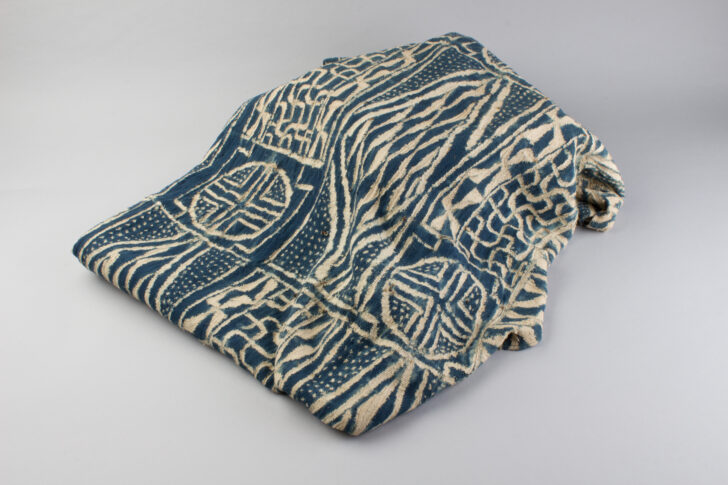Tunic
Bamileke

Description
Subject Matter:
Ndop, also called ndob, fabric is made of strips of woven cotton sewn together and then resist-dyed. Small strips of raffia are sewn to the fabric in the desired pattern and the fabric is then dyed with indigo. When the raffia is removed, the design is revealed. Ndop fabric is used as royal display cloths across the Cameroon Grassfields during ceremonial events and festivals, usually as a backdrop for important objects and regalia brought out for the public to view. It is also used for tunics worn by members of the Kuosi society as part of the costume worn with beaded elephant masks (called mbap nteng). Production of this cloth began at the beginning of the 20th century by the ruler of Bamum, Sultan Njoya. Based off patterns of cloth from eastern and central Nigeria brought by Hausa traders, ndop cloth is widely used across Grassfields kingdoms.
Reference:
Northern, Tamara. 1984. The Art of Cameroon. Washington, D.C.: Smithsonian Institution.
Page, Donna. 2007. A Cameroon World: Art and Artifacts from the Caroline and Marshall Mount Collection. New York: QCC Art Gallery Press.
Physical Description:
A blue and off-white tunic in a square shape. The tunic is decorated with various geometric designs sewn together.
Usage Rights:
If you are interested in using an image for a publication, please visit https://umma.umich.edu/request-image/ for more information and to fill out the online Image Rights and Reproductions Request Form.